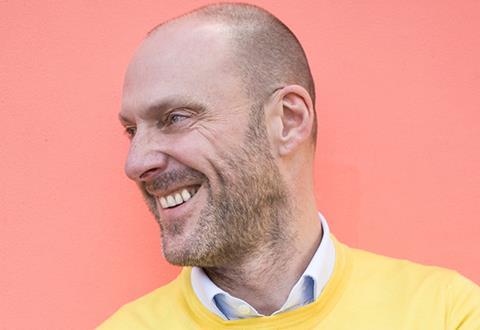It’s all a question of your appetite for risk, writes Martyn Evans

My heroine, Jane Jacobs, wrote (and I paraphrase) that excessive problems in cities are not problems of progress itself but evidence of a stagnation of ideas to solve them. I’m thinking about that smart arse comment that people roll out when you’re late: “You’re not ‘stuck in traffic’, you ARE traffic.”
We all know what the problems in our cities are. Housing, traffic, crime, access to good healthcare, education, (lack of) beauty, (not enough) green space. We read about them every day. It’s all too easy either to shrug and mumble something about modern life, or to complain that it’s a result of austerity, bad government policy, the global economy, immigration, Brexit, the EU or social media. All things that could be explained away as progress, or at least an unintended function of it.
But isn’t it really a result of a lack of good enough ideas? Or, more likely, a lack of interest on the part of those in control to look for, understand and experiment with good ideas? When did we get so worried about the consequences of failure? Probably when the instantly global verdict of social media made it so much more visible and consequential.
In 1906 the Gramophone and Typewriter Company Ltd was established in new buildings on farmland in Hayes, a small village west of London, now a town in the London Borough of Hillingdon right next to Heathrow Airport. Over the next 70 years that company grew into one of the UK’s largest, most globally successful businesses, renaming itself EMI when it invented electronic music playback equipment in 1931.
The company, which began life in London making wind-up gramophones in beautiful wooden furniture cases, invented vinyl, stereo, television as a consumer product, airborne radar in World War II and, in the 1970s, became the world’s largest producer of medical imaging equipment after inventing the CAT scanner.
All of these amazing advances in technology came from a building at the heart of the 150-acre factory called the Central Research Laboratory. In that building some of the world’s greatest scientific brains worked away inventing stuff, with no brief – just the freedom to create brilliant things. Elsewhere on the site there were clever money folks and smart marketing people who knew how to take these amazing inventions and turn them into consumer products that changed our world. It was only when the marketing people took over and the scientists became servants of what the market wanted that they stopped producing great things and the company started to fail.
So what can we learn from this? We know that our industry of architecture, urban design, landscaping, masterplanning and development is not short of good ideas. You only have to dive into the rich world of talks, seminars, festivals, online magazines (this one included) and design schools to see what is being discussed.
So why are so few of these great ideas being picked up and developed? Because we have lost our appetite for risk. What do you think the managers of EMI would say if you’d asked them in 1930 how they managed risk in their Central Research Laboratory? I bet they’d answer that they hardly ever went in there. So many good ideas coming out the door that others could turn into cold hard cash… why would you want to get in the way?
Oh for that kind of attitude now. How could we ask our new government to encourage risk in developing new ideas? How can we encourage greater connection between developers, contractors and the very best research departments in our universities? How about funding this kind of connection from a section 106 or CIL levy?
The development world is driven by expertise in mitigating risk. Planning risk, funding risk, development and construction risk and sales risk. How could we think differently to make it less likely that mitigating risk stifles innovation? Simple. By taking more risks.
















2 Readers' comments